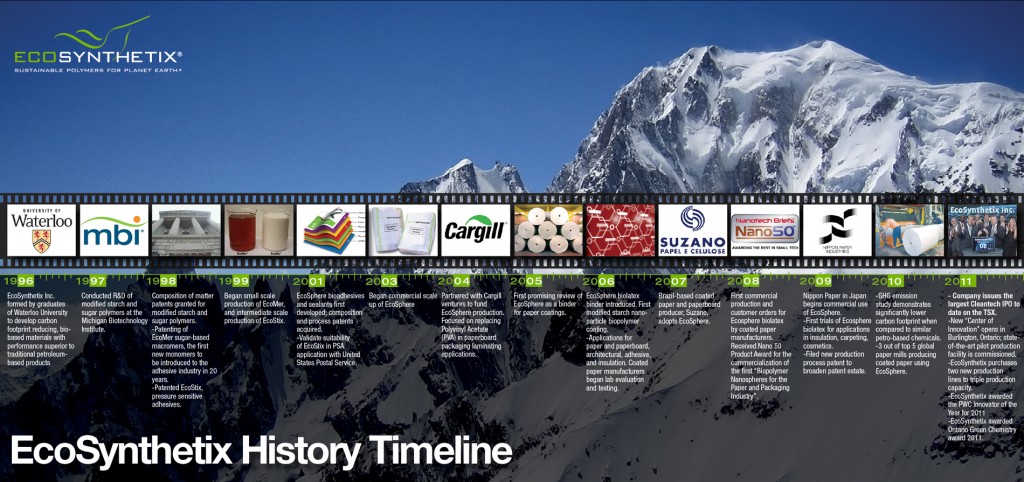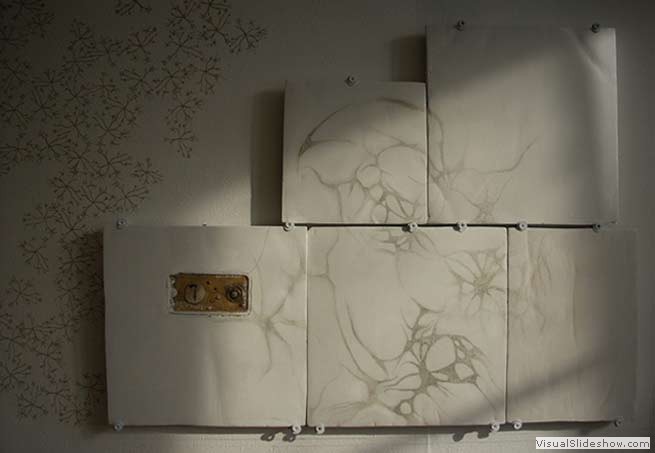The first time (May 11, 2012 posting) I wrote about the Sanofi BioGENEius Challenge Canada (SBCC) competition was when Janelle Tam was recognized as the 2012 national winner for her work with nanocrystalline cellulose (NCC) or, as it is sometimes known, cellulose nanocrystals (CNC). As I noted then,
For anyone who’s curious about Sanofi, it’s a French multinational pharmaceutical company headquartered in Paris, France. I found the Wikipedia essay a little more informative than the Sanofi company website .
Justifiably proud not only of Tam and other 2012 winners, SBCC has sent out a news release enumerating the many triumphs and benefits associated with this competition. From the SBCC Feb.20, 2012 news release,
Unexpected bonus prizes from a high school bioscience competition, mentored by some of Canada’s top research experts, range from six-figure scholarships, valuable networks and commercial patents to peer-reviewed journal citations, global publicity, international conference invitations and more, former teen participants say.
But the reward cited most often by alumni of the “Sanofi BioGENEius Challenge Canada” (SBCC), this year marking its 20th annual competition, is the eye-opening experience of watching their inventive ideas succeed and being encouraged in a professional lab, creating in many a career-shaping passion for science.
“That’s a benefit shared throughout Canada’s economy, which has a growing, $86 billion biotechnology sector, as well as with people worldwide,” says Jeff Graham, Chair of the Board at the Toronto-based Bioscience Education Canada, which manages the SBCC program.
“This program has been ‘infecting’ teens with what one mentor calls the ‘research virus’ and inspiring bioscience careers since 1994. And with hundreds of dedicated partner organizations and mentors nation-wide, we are extremely proud of the success achieved so far as we mark the 20th annual SBCC.
The competition’s latest surprise bonus prize winners are 2012 national competitors Jeanny Yao, 18, and Miranda Wang, 19 of Vancouver, both now in first year at universities in Toronto and Montreal respectively. The pair will spend Feb. 27 in Long Beach California, invited by organizers of the prestigious TED 2013 conference to tell the world’s science elite how they identified a species of bacteria from the Fraser River’s muddy banks that helps decompose plastic.
Their BC regional SBCC-winning project came to public attention last May in a front page story by the Vancouver Sun (http://bit.ly/XrsaB9) as the duo were packing to attend SBCC’s national finals in Ottawa. In the white marble halls of National Research Council of Canada headquarters — the country’s science temple — SBCC’s high-level final judging panel recognised Jeanny and Miranda’s project with a special prize for the “greatest commercial potential.” (The girls have since approached firms in BC and Ontario on commercialisation ideas.)
They were invited last summer to present their project again at TED@Vancouver (http://bit.ly/X5PRAF), part of a “worldwide talent search,” and were among a handful picked from 293 entrants to reprise their presentation in California.
TED is widely considered the world’s marquee annual science show-and-tell. And sharing a stage with fellow speakers like U2’s lead singer Bono and PayPal Founder Peter Theil is a five exclamation mark adventure for a couple of university frosh.
“We are extremely excited about this opportunity…!! We couldn’t have done this without your help!!!” Miranda wrote, announcing the news to SBCC’s Vancouver coordinators, LifeSciences BC. (For more on Jeanny and Miranda at TED: http://bit.ly/WRAs45).
According to the news release some 4500 Canadian teenagers have participated in the competition since 1994. There was a survey of 375 participants, from the news release,
In a survey of 375 past participants by Bioscience Education Canada [BEC], which runs SBCC, 84% said their participation helped determine their field of study or career plan; 74% were pursuing biotechnology-related education or professions, with 12.5% undecided. Some 55% were current university students, 24% planned to apply after high school, and 21% were post-secondary graduates now in the workforce. Nearly 60% of respondents were female and 79% had or have bursaries and/or scholarships.
Typical of comments teens relayed with the survey replies, from Brooke Drover of Vernon River, PEI: “It was amazing. So unbelievably stressful, but when my team came second place I could hardly breathe. It was the best feeling in the world knowing that I didn’t just play a sport and win a trophy. I helped the scientific community.”
“Thanks to hundreds of top scientist mentors who have shared their expertise and lab space with the student competitors, we’ve discovered and nurtured incredible talent in high schools and CEGEP classrooms nation-wide,” says Rick Levick, Executive Director of BEC and head of the national competition since its inception,
“The mentors are the unsung heroes of the SBCC program. They often bring out a passion for science and talent for research in kids who didn’t know they had any.”
While I do have some questions about the survey (when was it administered? how was it administered? why 375? etc.), I’m letting them go in appreciation of the participants’ extraordinary accomplishments, from the news release,
Ottawa
Maria Merziotis, $5,000 first place winner in the national 2008 SBCC, found her prize included an academic fast track. At 21, when those her age at university typically complete an undergrad degree, she’s finishing second year at the University of Ottawa’s medical school, with papers about her flu-related research in preparation for academic publication.
And, just seven years after he first impressed SBCC’s august panel of national judges as a Grade 11 student, Ottawa’s James MacLeod, now 23, is completing a Queen’s University master’s degree in pathology and molecular medicine and applying for early acceptance into the department’s PhD program.
Both credit SBCC with helping them reach medical career doors unusually soon. Says Maria: “The SBCC competition is the main reason I stand where I am today. It allowed me to explore the field of research, and through the doors it opened, gained me early acceptance into medical school.”
Saskatchewan
Says Rui Song of Saskatoon, who in Grade 9, age 14 (a veteran of Saskatchewan’s unique SBCC program for kids in Grades 7 and 8) prevailed over much older teens to win the #1 national award in 2010: “Before the SBCC, I hadn’t even considered being a researcher. I now hope to continue my research journey in university and in my career to continue creating beneficial change in the world.”
Her 2010 work to genetically fingerprint a lentil crop-killing fungus left the expert national judges “astonished.” She also placed 2nd in last year’s national competition, accepted an offer to spend last summer doing research at Harvard, and today, in Grade 12, is weighing full-time university offers.
Southwestern Ontario
The 2012 top national winner, Janelle Tam of Waterloo, says “SBCC was a huge part of why I started laboratory research at the university in high school, which was instrumental in my decision that I want to be a professor.”
Janelle, completing Grade 12 with studies at Princeton University ahead this fall, detailed the anti-ageing potential of a nano compound found in wood pulp, capturing media attention in at least 36 countries (http://bit.ly/XduBJd), including a social media blog by then-Ontario Premier Dalton McGuinty (http://bit.ly/THiq7P). Last summer in Québec she detailed her findings to staff and researchers of CelluForce’s, Domtar Corp. and FPInnovations — Canadian firms leading the commercial development of nanocrystalline cellulose.
Newfoundland
At 17, Sarai Hamodat of St John’s, Newfoundland, entered a prize-winning SBCC project showing that a traditional Asian oil remedy could ease the suffering of asthma patients, a project inspired by her hope of helping her asthmatic uncle.
Says Sarai, now 23 and a medical resident in pharmacology at the Queen Elizabeth II Health Sciences Centre in Halifax: “SBCC was my first real introduction to what the world of science has to offer.”
British Columbia
Taneille Johnson entered the competition in 2009 from Fort St. John (pop. 22,000) near the Alberta border in northern BC. At 16, she lived alone for a summer to work with a University of Calgary mentor in a quest to decipher DNA mutations that may lie behind a rare disorder which causes early onset aging and progressive bone marrow failure.
Taneille, the first student from northern BC to enter the regional event, won it in 2010 and placed third overall at the national finals in Ottawa. Now 20, she’s a second year BSc student of immunology at McGill University, Montreal, with a goal of medical school studies at the University of British Columbia.
“Not many first year university science students can approach their professor and show them the amount of lab experience I had from the SBCC,” she says, adding “I really cannot overstate how unique the SBCC experience is for high school students.”
Greater Toronto
A year after his first place national win in the 2011 SBCC, Toronto’s Marshall Zhang faced a tough decision: offers from three of the world’s most prestigious Ivy League universities — Yale, Harvard and Princeton.
“The SBCC changed the course of my life,” says Marshall, now a Harvard freshman, who at age 16, and mentored at the Hospital for Sick Kids, used a powerful supercomputer cluster to create a potential new treatment for cystic fibrosis.
On CBC’s “The Nature of Things,” host Dr. David Suzuki cited Marshall and his ideas as an example of the marvels of uninhibited teenage thinking. CF patients and their parents from across Canada and elsewhere wrote or called out of the blue to congratulate and thank Marshall for his efforts on their behalf. He was in Grade 11.
“I’d never met a CF patient before then,” he says, adding that the most memorable part of the entire adventure was realizing the real impact his research could have on people.
Manitoba
At 17, Ted Paranjothy of Winnipeg, inspired by a memory from five years old of a friend who died from leukemia, invested 3,000 research hours over two years after school with a mentor at the University of Manitoba, developing innovative ideas for cancer treatment. Ted’s framework for an anti-cancer agent able to kill human cancer cells without harming healthy ones is an innovation on which he now holds a patent.
His Grade 12 project earned a triple crown of high school biotech science: a first place sweep of the 2007 SBCC regional and national competitions, as well as the Sanofi-sponsored International BioGENEius Challenge — the only Canadian to achieve that distinction so far. The three first prize cheques totaled $15,000.
Later awarded some $150,000 in scholarships from other sources, Ted continued work with his distinguished mentor, Dr. Marek Los, and had three papers in peer-reviewed journals by the end of first year at UofM. Now 22, Ted is an independent researcher in cell science at UofM. He credits SBCC with enabling his university graduate-level research while still in high school, and says it “inspired me to pursue a career in biomedical research.”
Quebec
In 2011, a trio of Montreal CEGEP students entered the national SBCC with their new sorbet for vegetarians, having discovered a substitute for animal-based gelatine normally found in the frozen dessert. They won 2nd prize overall, a special award for that year’s project with the greatest commercial potential, and a lot of public attention, which helped create connections with several patent lawyers.
Today, all three are at universities studying science. “The SBCC definitely pushed to me to explore research opportunities in medicine,” says one team member, Simon Leclerc, adding that feedback from top scientists who evaluated their project and the experience gained was “inestimable… The SBCC is of great help for young, otherwise non-connected students to push their projects forward.”
Brava! Bravo!
Applications for the 2013 competition have been closed since November 2012 but there is a listing of the times and dates for the regional and national 2013 competitions. Although it’s unclear to me whether or not the public is invited to attend, you can get more details here.

